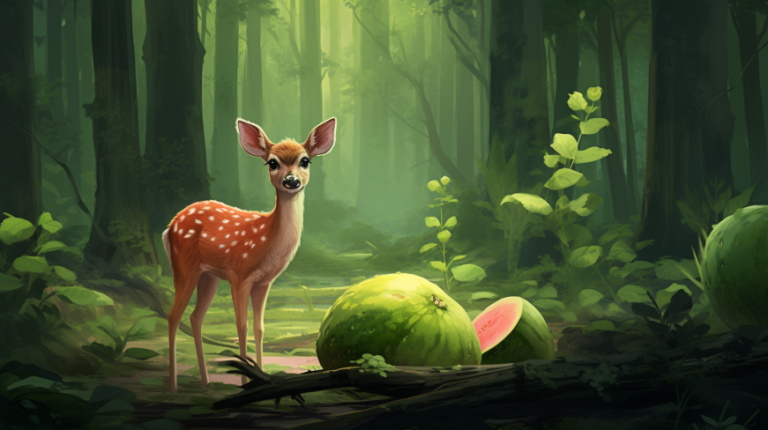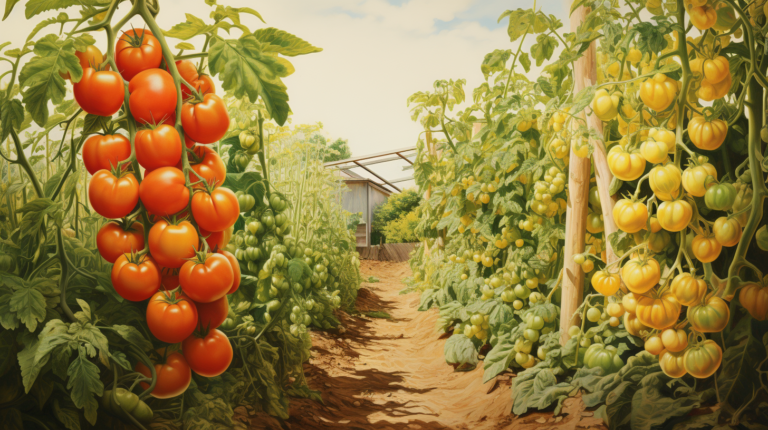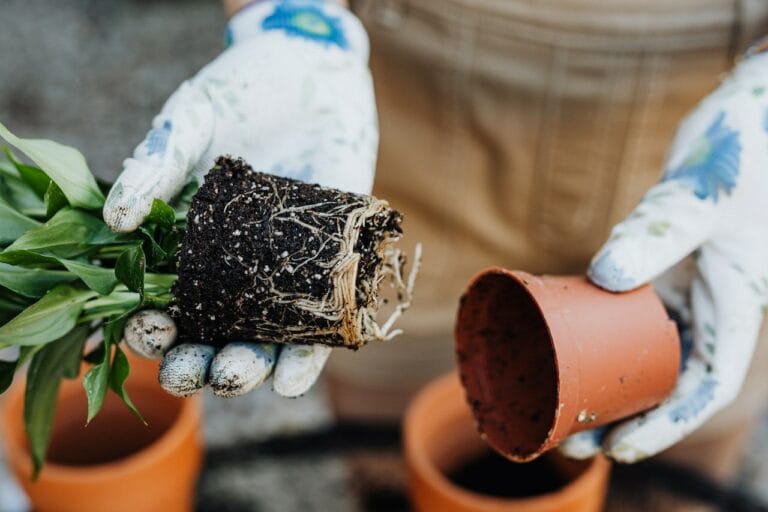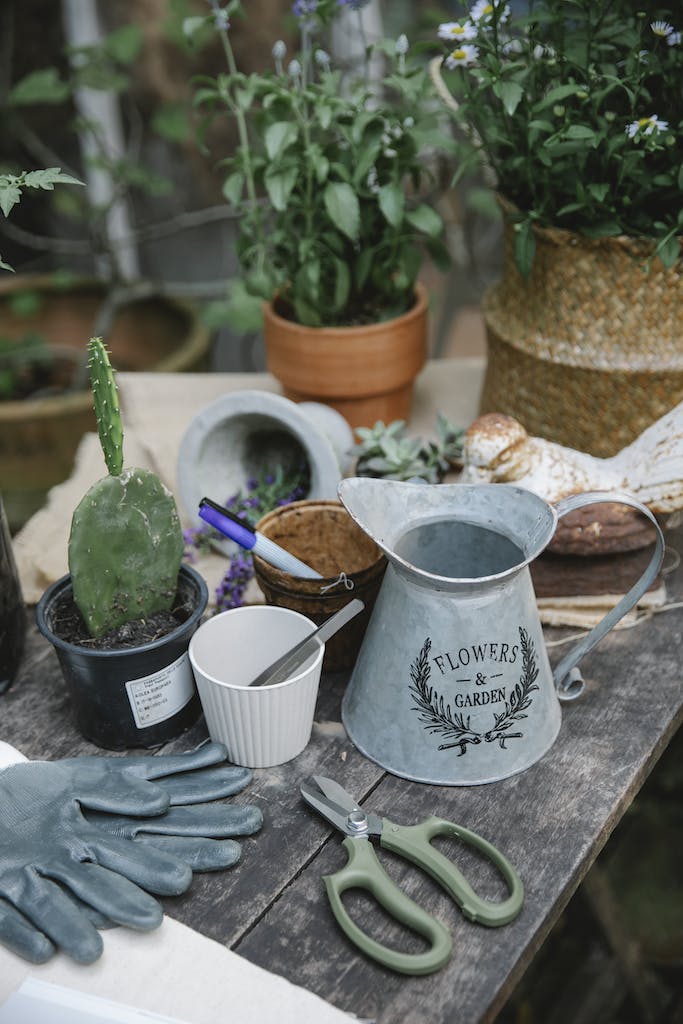I possess a unique ability to spot weeds. Today, we are venturing into the realm of tall weeds that are graced with yellow blooms.
They’re more than just garden invaders; they’re fascinating specimens with unique life cycles. We’ll identify them, explore their growth habits, and discuss their impacts.
I’ll also give you tips on managing these beautiful nuisances. Let’s pull out our gardening gloves and get to know these yellow bloomers better!
Key Takeaways
- Evening Primrose, Common Ragwort or Staggerwort, Yellow Salsify or Western goat’s beard, Yellow Toadflax or butter-and-eggs, and Yellow Sorrel/Sour Grass are common weeds with yellow flowers.
- Characteristics of these weeds include evening blooming, attracting bees, turning into fluffy balls, having intricate orchid-like blooms, and having heart-shaped leaves with a tart taste.
- Some less-known yellow flower weeds include Yellow Devil Hawkweed, Yellow Rattle, and Yellow Archangel, which contribute to biodiversity but are often invasive.
- Yellow Toadflax and Sour Grass are perennial weeds that spread through seeds and rhizomes. At the same time, Western goat’s beard and Yellow Nutsedge or Chufa begin their lifecycle with seed germination and attract pollinators.
Overview of Common Tall Weed with Yellow Flowers
We’re about to explore some common weeds with yellow flowers. These include Evening Primrose, Staggerwort, and Western goat’s beard.
We’ll also look at Yellow Toadflax, Sour Grass, and Chufa.
Introduction to Common Evening Primrose, Common Ragwort, and Yellow Salsify
I will introduce you to three common tall weeds and green leaves: the Common Evening Primrose, Staggerwort, and Western goat’s beard.
- Common Evening Primrose: This weed blooms in the evening, hence its name. Its flower head is large and bright, a vibrant addition to the night. It is also known for its distinctive dark green leaves.
- Common Ragwort: Despite being considered a pest, this weed has an intriguing flower head. It’s a favorite among insects, particularly bees. It typically has green leaves.
- Western goat’s beard: This weed’s flower head is a unique sight, especially when it turns into a fluffy, dandelion-like ball. It’s a common sight in many fields and grasslands and is often accompanied by lawn weeds.
Understanding these weeds is essential not just for gardeners but also for anyone interested in botany. They’re common, but that doesn’t mean they’re not fascinating.
Discovering Yellow Toadflax, Yellow Sorrel, and Yellow Nutsedge
Now, I’ll present an overview of the Yellow Toadflax, Sour Grass, and Yellow Nutsedge, all of which are common tall weeds with vibrant yellow flowers.
Yellow Toadflax, also known as butter-and-eggs, is a perennial plant with yellow that stands out with its intricate, orchid-like blooms. Its yellow petals add a touch of elegance to your flower beds. It can be quite striking, and these growing daisy-like flowers are a sight to behold.
Yellow Sorrel or Sour Grass, another common weed, is characterized by its heart-shaped leaves and tart taste. This plant produces yellow flowers that bloom from June to August, and it’s easy to spot in your garden.
Lastly, Chufa, technically a sedge and not a weed, is often found in damp areas and has a distinctive, triangular stem. Sour Grass can grow up to three feet tall with yellow flowers that resemble small clusters of tiny flowers. Understanding these plants can transform your perspective on what’s commonly dismissed as annoying garden intruders. Get rid of it in your garden to maintain its beauty.
In your quest to find a plant with flowers, these three species offer a fascinating variety of small flowers with five yellow petals that add a splash of color to your outdoor space.
Whether you’re dealing with butter-and-eggs’ charming flowers that open like orchids or admiring Sour Grass that resemble heart shapes, these plants are unique additions, even if they are often considered as another common weed with flowers that grow in your garden.
Canada goldenrod is a tall plant with flowers that can reach two feet tall and bloom from June to August. So, don’t overlook the beauty of these flowers in your garden.
Features of Less-Known Yellow Weeds
In this section, I’ll share some interesting features of a few less-known tall weeds that produce yellow flowers.
1. Yellow Devil Hawkweed: This tall weed is an aggressive species with small flowers that bloom in early summer. It’s characterized by its rosette leaves and hairy stems.
2. Yellow Rattle: A unique feature of this weed is its flowers bloom in early summer and produce a rattling sound when shaken, hence the name.
3. Yellow Archangel: This weed stands out due to its flowers in a whorl pattern around square stems.
These features of less-known blossom weeds add to the biodiversity of our ecosystems, even though they’re often overlooked due to their invasive nature.
Identifying Characteristics of Yellow Flower
Let’s now turn our attention to the distinguishing traits of these blossom weeds.
We’ll begin with the unique features of the Common Evening Primrose, Staggerwort, and butter-and-eggs.
Then, we’ll understand how to identify Sour Grass, Western goat’s beard, and Chufa.
Distinguishing Features of Common Evening Primrose
Surprisingly, I’ve found that the Common Evening Primrose, a tall weed with a distinctive yellow flower, has several unique features that set it apart from other weeds. This tall plant has distinguishing features of common evening primrose that are easy to spot if you know what to look for.
- Height and Structure: This perennial weed can grow up to 5 feet inches tall. It has a hairy stem and alternately arranged leaves.
- Bloom Time: Unlike other weed plants, its flowers that bloom are nocturnal. Flowers open in the evening and close by morning.
- Seed Pods: After blooming, it produces elongated, capsule-like seed pods that add to its distinctiveness.
Understanding these characteristics can help you quickly identify this plant in your garden.
Unique Traits of Common Ragwort and Butter-and-eggs
I’ve identified two key players in the realm of weeds, namely Staggerwort and Butter-and-eggs. I’ll delve into the unique characteristics that set them apart.
Staggerwort is known for its bright yellow flower heads that cluster at the top of the plant. This weed can grow up to 1 meter tall and has deeply divided leaves.
On the other hand, the butter-and-eggs have a more slender appearance. Its flowers resemble snapdragons and are a bright yellow color. It’s a weed that can grow up to 1 meter tall as well.
These details should help you to identify these two.
Identification Guide for Yellow Sorrel, Yellow Salsify, and Chufa
Now, we’re going to shift our focus to a trio of other weeds: Sour Grass, Western goat’s beard, and Chufa, each with its own distinctive features that’ll help you spot them in the wild.
- Yellow Sorrel: This weed is known for its heart-shaped leaves and bright yellow flowers. It’s often confused with clover, but its distinguishing yellow flowers set it apart. These yellow flowers open in clusters of small yellow flowers.
- Western goat’s beard: This has a dandelion-like appearance. Its unique feature is the large, globe-shaped seed head that follows the yellow bloom.
- Chufa: This perennial weed has triangular stems and yellow-green flowers. It’s particularly tough to control due to its underground tubers.
Use this identification guide as your compass in the wild world of weeds!
Growth Habits and Lifecycle of Yellow Flower Weeds

Let’s now turn our attention to the growth habits and lifecycle of these weeds.
We’ll first get to know the life cycle of Common Evening Primrose and Staggerwort.
Then, we’ll move on to the growth habits of butter-and-eggs and Sour Grass.
Lastly, we’ll explore the lifecycle details of Western goat’s beard and Chufa.
Understanding the Life Cycle of Common Evening Primrose and Common Ragwort
Diving into the life cycle of the common evening primrose and Staggerwort, I’m intrigued by the unique growth habits of these weeds.
The common evening primrose, a biennial weed that blooms, produces small yellow flowers in a whorl, typically from late spring to late summer.
1. Common Evening Primrose: A common weed with yellow flowers, it’s a weed that blooms from June and can continue flowering until fall.
The Staggerwort, on the other hand, is a biennial weed that blooms in the second year, displaying yellow flowers in a cluster.
2. Common Ragwort: This biennial weed blooms in the second year, displaying yellow flowers in a cluster.
Both plants prefer disturbed soils, establishing themselves quickly and spreading rapidly.
3. Growth Habits: Both plants prefer disturbed soils, quickly establishing and spreading rapidly.
Understanding these weeds’ life cycles can help us better manage their growth and potentially use them beneficially.
Unveiling the Growth Habits of Butter-and-eggs and Yellow Sorrel
While I’ve explored the lifecycle of evening primrose and ragwort, it’s fascinating to delve into the growth habits and lifecycle of butter-and-eggs and Sour Grass, two other prominent weeds.
Here’s a fascinating markdown table comparison.
| Weed | Growth Habits | Lifecycle |
| Butter-and-eggs | Perennial weed that grows vigorously, spreading via seeds and rhizomes | Can live for several years |
| Yellow Sorrel | Perennial weed that grows in a rosette pattern | Can survive for many years if conditions are right |
Mastering the understanding of these weeds, their growth habits, their lifecycle, and how they interact with their environment can help us manage them more effectively.
Lifecycle Details of Yellow Salsify and Yellow Nutsedge
I’m now focusing on the lifecycle details of Western goat’s beard and Chufa, two more captivating weeds.
Western goat’s beard is a member of the Asteraceae family. It produces bright yellow flowers that attract pollinators.
1. Germination: Both weeds begin their lifecycle with seed germination. The conditions required differ based on the soil type and temperature.
2. Vegetative Growth: As they mature, they develop bright yellow clustered flowers. This stage is when they’re most visible and vibrant.
3. Reproduction: Lastly, they reproduce through seeds, which are spread by wind, water, or animals.
Understanding the lifecycle details of Western goat’s beard and Chufa provides a great advantage for effective weed management.
Impact of Invasive Tall Weeds with Yellow Flowers

Now, let’s move on to the effects of these tall weeds.
We’ll examine their ecological impact and then see how they disrupt home gardening and agriculture.
It’s important to understand these threats to manage and control these invasive species effectively.
Analyzing the Ecological Impacts of Invasive Yellow Weeds
I’ve been studying the ecological impacts of invasive weeds and discovered some startling effects on our local ecosystems. The spread of weeds, particularly this, has a significant impact on our surroundings.
Here’s what I uncovered:
1. Nuisance weed species like these weeds out-compete native plants, leading to decreased biodiversity.
2. These invasive plants alter habitats and disrupt established food chains.
3. They also contribute to soil erosion, as their shallow roots don’t hold the soil as well as native plants.
Understanding the ecological impacts of these invasive species goes beyond mere gardening nuisances. It’s a significant step in preserving and restoring our local ecosystems from the destructive spread of these weeds.
How Yellow Weeds Affect Home Gardening
In my experience, not only do they pose a significant threat to local ecosystems, but they also wreak havoc on home gardens on a large scale.
As a common lawn weed, it can quickly take over, out-competing desirable plants for nutrients and sunlight. They are particularly problematic in home gardening because they’re hard to eliminate, often requiring repeated treatments. They can stifle the growth of your carefully cultivated plants and ruin the aesthetic appeal of your garden.
It’s important, therefore, to take proactive steps to get rid of it. Understanding their impact is the first step in managing this invasive species effectively.
Invasive Weeds and Agricultural Disruption
Where do these meddlesome weeds cause the most disruption, and could it possibly be in our agricultural sectors? Indeed, it’s the impact of weeds and agricultural disruption that concerns us most.
These noxious weeds, like the Canada goldenrod, a tall, troublesome weed, can wreak havoc on crops. Here are three significant ways they do this:
1. They compete with crops for resources, reducing yield.
2. They can host pests and diseases that can spread to crops.
3. Their fast and aggressive growth can crowd out crops.
Knowing the different types of weeds and their impact is crucial for effective agricultural management. Let’s delve deeper into how these invasive weeds disrupt farming and ways we can control their spread.
Dealing with Weeds: Yellow Flower Bloom Management

Now, let’s talk about how to manage these yellow-flowered weeds.
We’ll focus on effective tactics for controlling common evening primrose and common ragwort and explore management methods for Sour Grass and Western goat’s beard.
We’ll also share some handy tips for eradicating butter-and-eggs and Chufa.
Effective Tactics for Controlling Common Evening Primrose and Common Ragwort
I’ve found that understanding the life cycle of the common evening primrose and common ragwort is the first step towards effective management of these weeds. Once we grasp their growth and bloom patterns, we can take strategic actions to control these common weed pests.
First, apply a pre-emergent weed killer in early spring. This disrupts the growth of seeds, effectively nipping the problem in the bud.
Second, maintain a healthy lawn. Thick, vigorous grass can outcompete the yellow rocket and other broadleaf weed species.
Finally, hand-pulling or hoeing can effectively remove garden weeds, especially in smaller areas or for less established infestations.
Mastering these techniques can keep your lawns and gardens weed-free and beautiful.
Management Methods for Yellow Sorrel and Yellow Salsify
Let’s dive into the effective management methods for dealing with two notorious weeds: Sour Grass and Western goat’s beard.
Being aware of the type of weed you’re dealing with is essential. Sour Grass, a stubborn weed that grows aggressively, can grow almost anywhere. This weed produces yellow flowers, making it easy to spot. To control it, frequent mowing and proper fertilization is key.
As for Western goat’s beard, it’s a biennial weed that also produces yellow flowers. The most effective management methods for Sour Grass and Western goat’s beard involve digging them out manually, ensuring you remove the entire root. Chemical controls are a last resort but can be effective if applied at the right time.
Always remember persistence is crucial in weed management.
Tips for Butter-and-Eggs and Yellow Nutsedge Eradication
So, we’ve covered Sour Grass and Western goat’s beard, and now I will tackle the tricky task of eradicating butter-and-eggs and Chufa. Both are considered a weed, with the former being an annual weed, tall with yellow flowers. The latter displays leaves and small yellow flower heads.
Here’s my 3-step approach:
1. Identify: Look for tall plants with yellow flowers. Butter-and-eggs feature narrow leaves and small yellow flowers, while Chufa has triangular stems and yellow flower heads.
2. Eliminate: Use a sharp spade to dig up the weeds, ensuring you get the whole root system.
3. Prevent: Apply a pre-emergent herbicide in early spring to prevent weed germination.
After learning about tall weeds with yellow flowers, discover the secrets of tall weeds with tiny white flowers!
Frequently Asked Questions
What Is the Best Time of Year to Attempt the Removal of Tall Weeds?
In my experience, the optimal time to tackle weed removal is late spring or early summer, right before they start seeding. This timing helps prevent further spread, making your job easier in the future.
Are There Any Specific Pesticides Recommended for Dealing With These Types of Weeds?
Yes, there are specific pesticides I’d recommend for dealing with these types of weeds. Glyphosate-based products are particularly effective, but it’s important to apply them when the plant is actively growing.
Can These Weeds Be Harmful or Toxic to Pets or Children?
Some weeds can be harmful or toxic to both pets and children. It’s essential to identify the specific weed to understand its toxicity level and take necessary precautions.
What Are Some Organic Methods for Controlling These Weeds?
For organic control of these pesky plants, I’d recommend mulching to prevent growth, hand pulling if they’re few, or using a vinegar-based homemade herbicide. It’s all about persistence and regular garden upkeep.
Are There Any Beneficial Uses for These Types of Weeds, Such as Medicinal or Composting?
There are benefits for some types of weeds. I’ve used these weeds for composting; they’re excellent green matter. Some also have medicinal uses. For instance, dandelions, a common weed, are rich in vitamins, and their roots are used in herbal medicines.
Conclusion
So, there you have it. Those tall weeds aren’t just eye-catching; they can be a real headache, too.
Knowing how to identify them, understanding their growth habits, and seeing their potential impact can go a long way.
But don’t worry; with careful management, you can keep these yellow-blooming pests under control.
Remember, a little knowledge and a lot of patience can keep your garden weed-free and beautiful.







